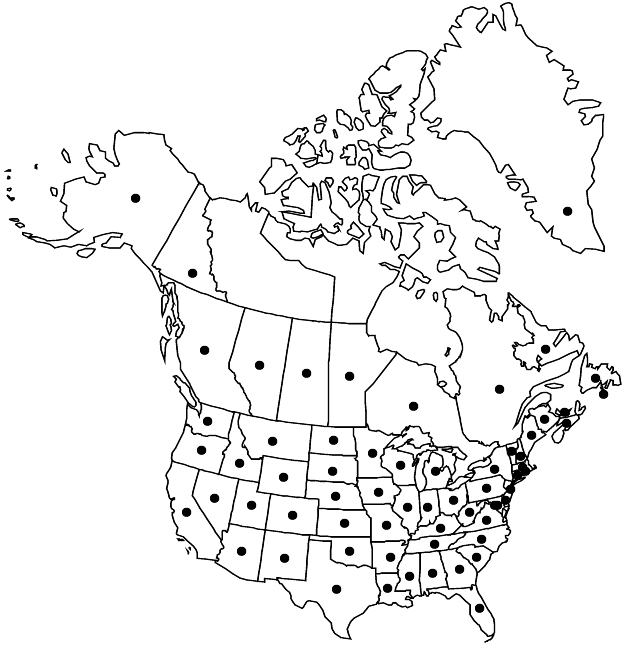Fallopia convolvulus
Taxon 29: 300. 1970.
Herbs, annual, not rhizomatous, 0.5–1 m. Stems scandent or sprawling, branched proximally, herbaceous, puberulent, sometimes mealy, not glaucous. Leaves: ocrea persistent or deciduous, tan or greenish brown, cylindric, 2–4 mm, margins oblique, face not fringed with reflexed hairs and slender bristles at base, otherwise glabrous or scabrid; petiole 0.5–5 cm, puberulent in lines; blade cordate-ovate, cordate-hastate, or sagittate, 2–6(–15) × 2–5(–10) cm, base cordate, margins wavy, scabrid, apex acuminate, abaxial face usually mealy and, rarely, minutely dotted, not glaucous, adaxial face glabrous. Inflorescences axillary, erect or spreading, spikelike, 2–10(–15) cm, axes puberulent; peduncle 0.1–10 cm or absent, glabrous or scabrid distally in lines. Pedicels ascending or spreading, articulated distally, 1–3 mm, glabrous or, rarely, scabrid. Flowers bisexual, 3–6 per ocreate fascicle; perianth nonaccrescent, greenish white, often with pinkish or purplish base, 3–5 mm including stipelike base, glabrous or outer 3 with blunt, hyaline hairs; tepals elliptic to obovate, apex obtuse to acute, outer 3 obscurely keeled; stamens 8; filaments flattened proximally, glabrous; styles connate distally; stigmas capitate. Achenes included, black, 4–5(–6) × 1.8–2.3 mm, dull, minutely granular-tuberculate, especially on faces; fruiting perianth glabrous or with blunt, hyaline hairs, wings absent or, rarely, flat to undulate, 0.4–0.9 mm wide at maturity, scarcely decurrent on stipelike base, margins entire. 2n = 40.
Phenology: Flowering May–Oct.
Habitat: Cultivated ground, waste places
Elevation: 0-2700 m
Distribution

Greenland, St. Pierre and Miquelon, Alta., B.C., Man., N.B., Nfld. and Labr., N.S., Ont., P.E.I., Que., Sask., Yukon, Ala., Alaska, Ariz., Ark., Calif., Colo., Conn., Del., D.C., Fla., Ga., Idaho, Ill., Ind., Iowa, Kans., Ky., La., Maine, Md., Mass., Mich., Minn., Miss., Mo., Mont., Nebr., Nev., N.H., N.J., N.Mex., N.Y., N.C., N.Dak., Ohio, Okla., Oreg., Pa., R.I., S.C., S.Dak., Tenn., Tex., Utah, Vt., Va., Wash., W.Va., Wis., Wyo., Eurasia, introduced in South America (Argentina, Chile), Africa (Algeria, Morocco, Republic of South Africa), Pacific Islands (Hawaii, New Zealand), Australia.
Discussion
Fallopia convolvulus can be an aggressive weed in crop fields. Rare plants with winged fruiting perianths have been named var. subalata; that characteristic often varies within populations.
Selected References
None.